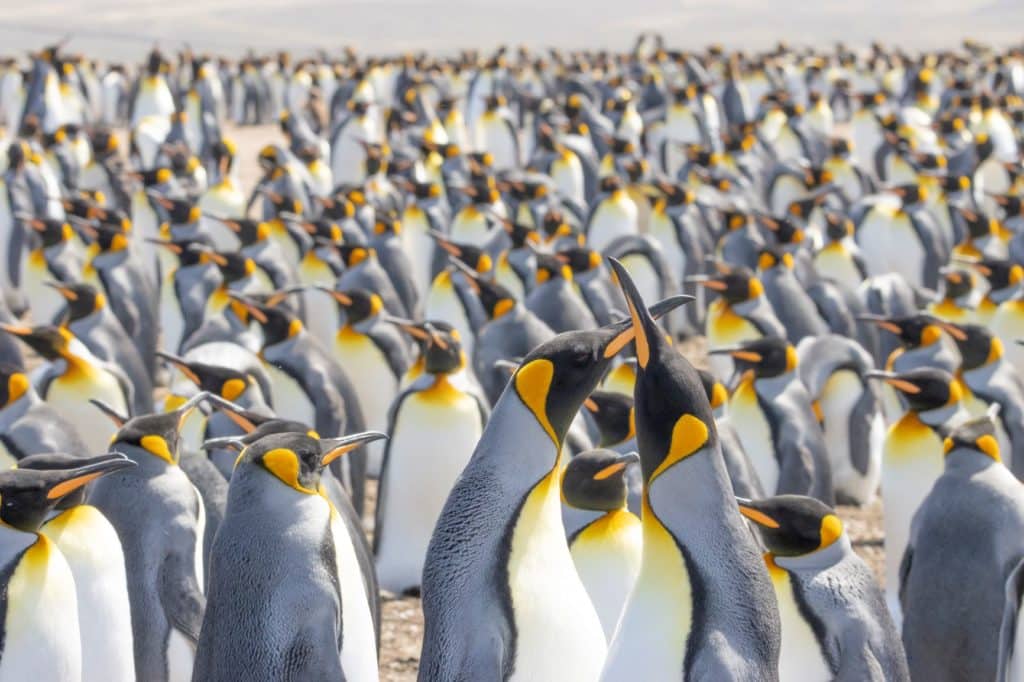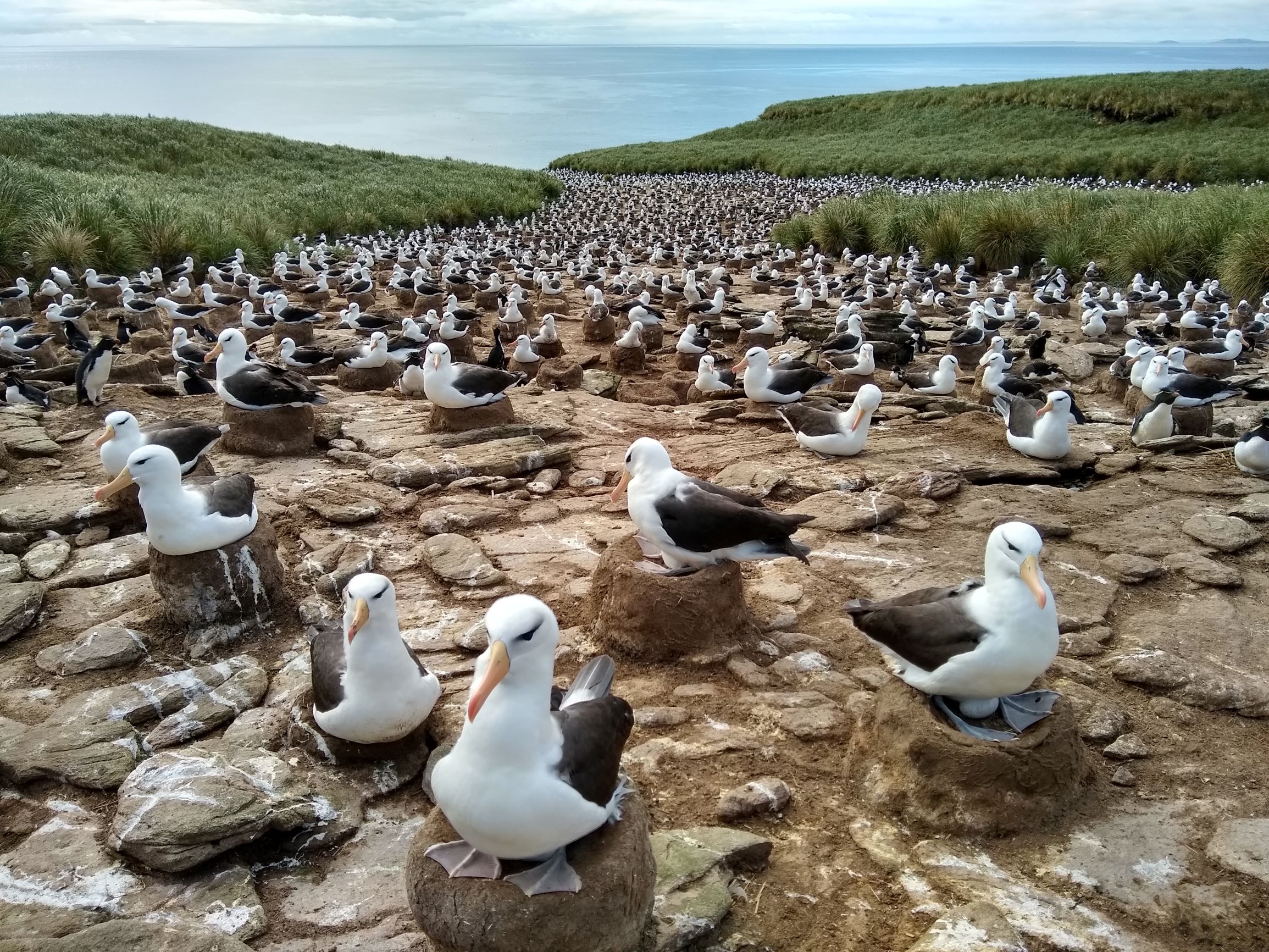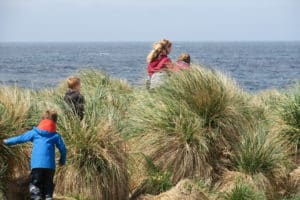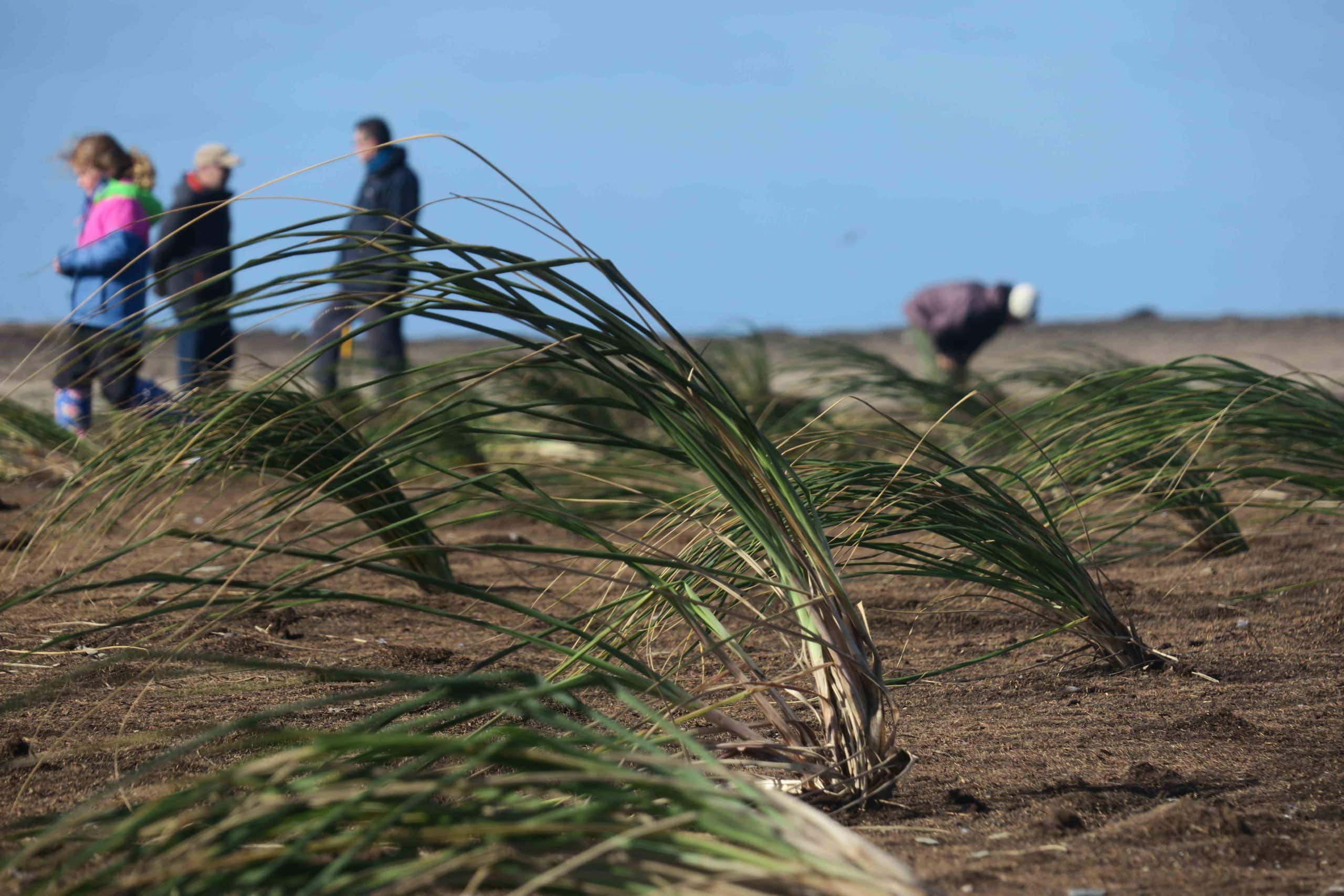Being blunt, the wildlife of the Falkland Islands isn’t the most varied, with just 250 bird species recorded, no native land mammal, and 181 native plant species. However, what we lack in quantity we make up for in quality! We share these islands with half a million pairs of breeding black-browed albatross (more than two-thirds of the entire global population), our shores are a haven for the Vulnerable southern rockhopper penguins, and we are home to incredible rare and tame birds such as the striated caracara – a raptor which will hop along behind you as you walk, waiting for a carelessly dropped sandwich! There are about as many striated caracaras in the world as there are giant pandas, and the majority of them are here in the Falkland Islands.

Sea Lions basking on Falklands Conservation’s Double Island. Photo credit: Dr Andrew Stanworth, Falklands Conservation

The world’s most northerly colony of King Penguins, Falkland Islands. Photo credit: Michelle Winnard, Falklands Conservation
It has been four years since I first arrived in the Falkland Islands, and I’ve been with Falklands Conservation since 2018. In this time, I’ve been lucky to see some of the wildest, most incredible corners of this archipelago. From sitting on the edge of an albatross colony crowded with hundreds of thousands of birds, to sheltering under thick, 3-m tall grass and watching hundreds of sea lions basking in the sunshine, to scouring the countryside for rare orchids and other tiny intricate plants. Even on a short walk near the main town of Stanley, you can catch a glimpse of dolphins, sea lions, penguins, and whales.
Falklands Conservation works across a broad range of areas, including research, seabird monitoring, and on-the-ground conservation work. We believe that what benefits the environment will also benefit the local community; the natural environment is intrinsically linked to people’s health and wellbeing, as well as to their livelihoods – particularly through the three largest industries in the Falklands: fishing, tourism, and agriculture. Reflecting this, any conservation action needs the support of local people, and so we work alongside the community to support their continued understanding of and appreciation for the natural environment, whilst advocating government to recognise the environment as a pivotal part of life in the islands.


Top: One of the albatross colonies of North Island, taken during licenced monitoring activities. Photo credit: Dr Esther Bertram, Falklands Conservation. Bottom: Striated caracara, standing amongst an area of freshly-planted tussac tillers. Photo credit: Michelle Winnard.
Amongst all of these fantastic wilderness experiences, my favourite days with Falklands Conservation are often those which take place on some of the more damaged and desolate corners of the islands, where hands-on restoration work is most needed. It can be back-breaking work in ruthless weather, but it is an incredibly rewarding experience to complete hours of hard labour planting small tillers of native grasses into the black peat soils. The loss of native habitat has been an ongoing problem in the Falkland Islands since humans first arrived in the 1700’s (there was no indigenous population, so the islands were uninhabited until the first European explorers settled), and today soil erosion is worsened by the ongoing effects of climate change.

Young people, including Watch Group members, looking out to sea (perhaps trying to spy whales?!) from some lovely tussac bogs during a community outreach event. Photo credit: Falklands Conservation
Despite the problems that some of our native habitats face, it is always encouraging to see how many local people volunteer with our habitat planting initiatives, and how many landowners are sharing their experiences and seeking advice and help in restoring their land. Fortunately, and despite the islands lacking a strong and forward-thinking national policy on ecological restoration, this is something that many in the local community are incredibly passionate about, proving time and time again that large-scale transformation is possible with the right willpower and funding. Excitingly, Falklands Conservation recently took ownership of New Island, a nature area in the west of the archipelago, following the 2020 merger of our organisation and the New Island Conservation Trust, who had been running this private reserve for many years. New Island is by far the largest site under our custodianship, offering sensational ecological restoration opportunities which will benefit 10,000+ pairs of black-browed albatrosses, rockhopper penguins, sea lions, small rare native plants, and many more.

Volunteers plant tussac tillers on sea lion island. Tussac grass can grow 3m tall and plays an important role in the lives of over two-thirds of our breeding birds, as well as providing shelter for seals. Photo credit: Michelle Winnard, Falklands Conservation

A survey team travel through the thick tussac grass of North Island, a near-pristine island in the Falklands, home to nearly 20,000 pairs of black-browed albatross. Photo credit: Michelle Winnard, Falklands Conservation
Habitat restoration is a long-term ambition. In our cold, windy environment many plants are incredibly slow growing. A boxwood sapling planted today may take more than 40 years before it is large enough to provide shelter and food to various insects and birds. Similarly, the work we do with the young people of the Watch Group forms part of our long-term investment in the wildlife and the community of these islands. We help these young Islanders, aged 8-16, to explore and appreciate their fantastic natural environment, but also help them understand the various threats that our wildlife faces and how these young conservationists themselves can be helping, now and long into the future. In addition to tussac planting and litter picks, this amazing and insightful group of children and young adults have also been meeting with our nation’s elected officials – questioning them on the effectiveness of environmental policies, and advocating their own Watch Group Islands Plan – a series of environmental priorities identified by the Watch Group members themselves. They offer the long-term inspiration that our natural environment will be in great hands, providing we leave them healthy wildlife and restored habitats.
Finally, here is a short documentary that I was able to produce alongside Falklands Conservations ongoing whale research, investigating how elusive and endangered sei whales use our coastal waters.

